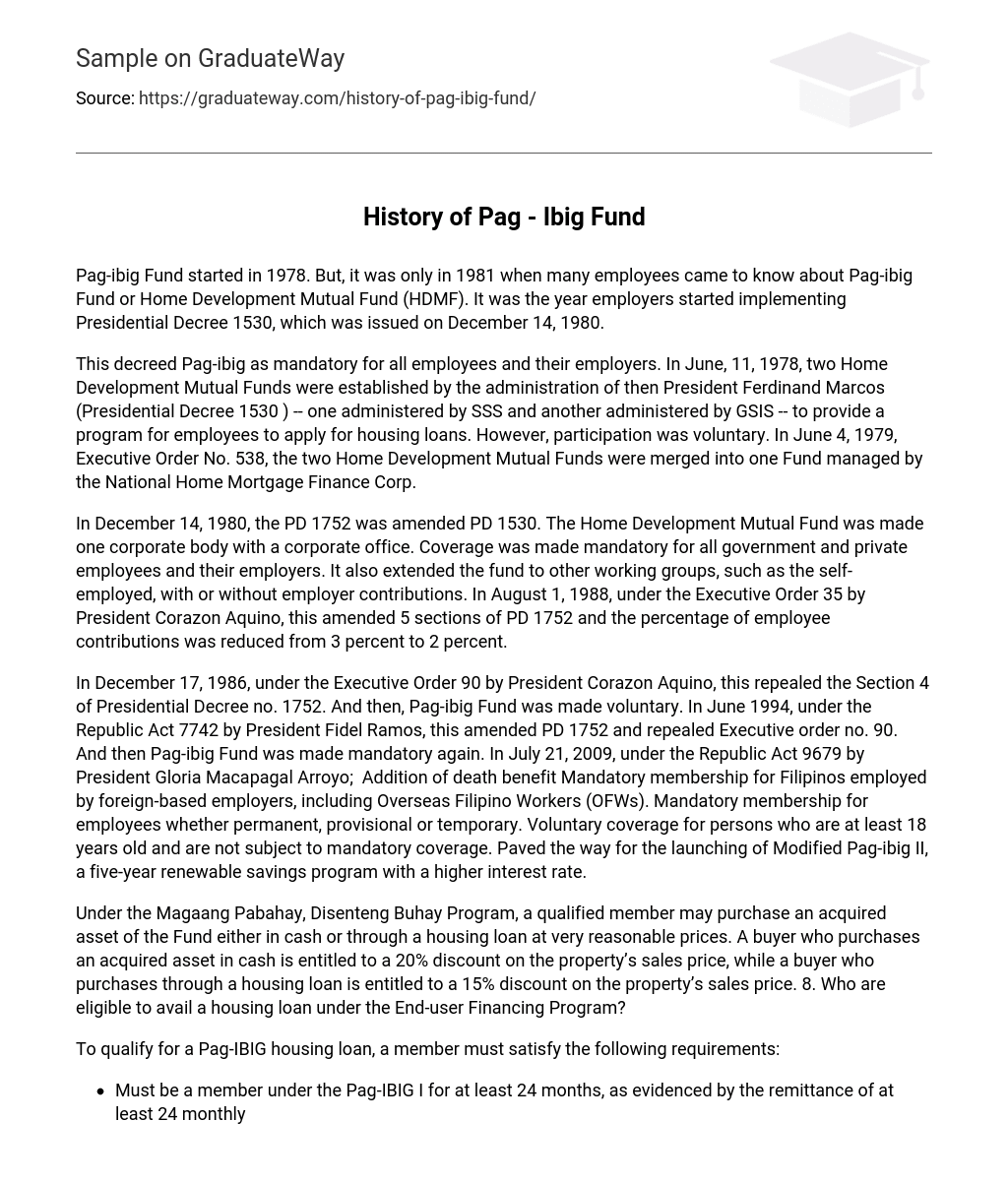Pag-ibig Fund started in 1978. But, it was only in 1981 when many employees came to know about Pag-ibig Fund or Home Development Mutual Fund (HDMF). It was the year employers started implementing Presidential Decree 1530, which was issued on December 14, 1980.
This decreed Pag-ibig as mandatory for all employees and their employers. In June, 11, 1978, two Home Development Mutual Funds were established by the administration of then President Ferdinand Marcos (Presidential Decree 1530 ) — one administered by SSS and another administered by GSIS — to provide a program for employees to apply for housing loans. However, participation was voluntary. In June 4, 1979, Executive Order No. 538, the two Home Development Mutual Funds were merged into one Fund managed by the National Home Mortgage Finance Corp.
In December 14, 1980, the PD 1752 was amended PD 1530. The Home Development Mutual Fund was made one corporate body with a corporate office. Coverage was made mandatory for all government and private employees and their employers. It also extended the fund to other working groups, such as the self-employed, with or without employer contributions. In August 1, 1988, under the Executive Order 35 by President Corazon Aquino, this amended 5 sections of PD 1752 and the percentage of employee contributions was reduced from 3 percent to 2 percent.
In December 17, 1986, under the Executive Order 90 by President Corazon Aquino, this repealed the Section 4 of Presidential Decree no. 1752. And then, Pag-ibig Fund was made voluntary. In June 1994, under the Republic Act 7742 by President Fidel Ramos, this amended PD 1752 and repealed Executive order no. 90. And then Pag-ibig Fund was made mandatory again. In July 21, 2009, under the Republic Act 9679 by President Gloria Macapagal Arroyo; Addition of death benefit Mandatory membership for Filipinos employed by foreign-based employers, including Overseas Filipino Workers (OFWs). Mandatory membership for employees whether permanent, provisional or temporary. Voluntary coverage for persons who are at least 18 years old and are not subject to mandatory coverage. Paved the way for the launching of Modified Pag-ibig II, a five-year renewable savings program with a higher interest rate.
Under the Magaang Pabahay, Disenteng Buhay Program, a qualified member may purchase an acquired asset of the Fund either in cash or through a housing loan at very reasonable prices. A buyer who purchases an acquired asset in cash is entitled to a 20% discount on the property’s sales price, while a buyer who purchases through a housing loan is entitled to a 15% discount on the property’s sales price. 8. Who are eligible to avail a housing loan under the End-user Financing Program?
To qualify for a Pag-IBIG housing loan, a member must satisfy the following requirements:
- Must be a member under the Pag-IBIG I for at least 24 months, as evidenced by the remittance of at least 24 monthly contributions at the time of loan application. Not more than 65 years old at the date of loan application and must be insurable provided further that he is not more than 70 years old at loan maturity.
- Has the legal capacity to acquire and encumber real property.
- Has passed satisfactory background/credit and employment/business checks conducted by the developer and the Pag-IBIG Fund.
- Has no outstanding Pag-IBIG housing loan, either as a principal borrower or co- borrower;
- Has not availed of a Pag-IBIG housing loan that was foreclosed, cancelled, bought back due to default, or subjected to dacion en pago, which shall include cases where the borrower is no longer interested to pursue the loan and surrenders the property.
- May have an outstanding Pag-IBIG multi-purpose loan but which is updated in payments at the time of loan application. A member whose multi-purpose loan is in arrears shall be required to pay his arrears over the counter to update his account.





